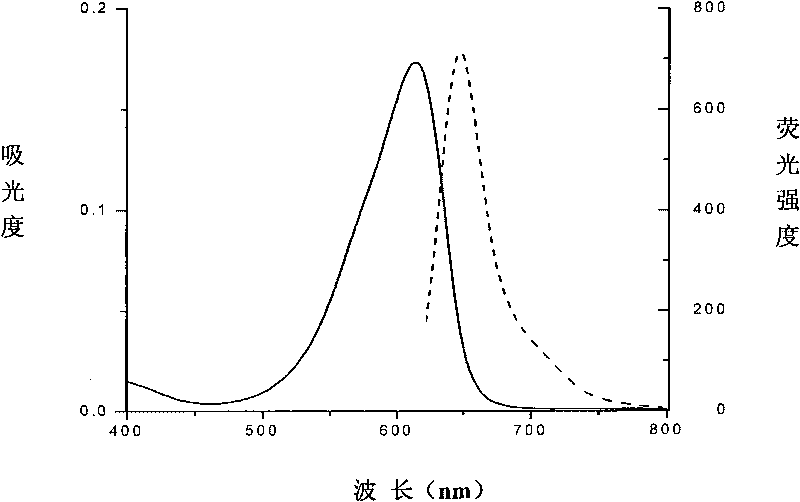Phycocyanin alpha subunits fluorescent protein combined with phycocyanobilin PCB and application thereof
A technology of phycocyanin and phycocyanin, which is applied in the fields of application, algae/bryopeptide, hybrid peptide, etc., can solve the problems of complicated technical procedures, high background, and difficult quantitative determination of fluorescence immunoassay, and achieve fluorescence efficiency High, good sensitivity, easy to purify the effect
- Summary
- Abstract
- Description
- Claims
- Application Information
AI Technical Summary
Problems solved by technology
Method used
Image
Examples
Embodiment 1
[0041] The amino acid sequence of the protein is shown in Sequence 1. The gene encoding the phycocyanin alpha subunit is cloned into an expression plasmid, and the phycocyanin alpha subunit is expressed, and its N-terminus is marked with a His-tag, which is not only conducive to its purification , also helps to improve its solubility. Phycocyanin is bound to the cysteine residue at position 133 (equivalent to position 85 of the original phycocyanin alpha subunit) through a thioether bond. Its spectrum is as figure 2 As shown, the absorption peak is 619nm, and the fluorescence emission peak is 641nm.
Embodiment 2
[0043] The amino acid sequence of the protein is shown in Sequence 2. The streptavidin coding gene and the phycocyanin alpha subunit coding gene are spliced and cloned into the expression plasmid, and the fusion of streptavidin and phycocyanin alpha subunit is expressed protein, directly achieve streptavidin labeling of the phycocyanin alpha subunit; and the N-terminal has a His-tag tag, which not only facilitates its purification, but also helps to improve its solubility. Phycocyanin is bound to the cysteine residue at position 261 (equivalent to position 85 of the original phycocyanin alpha subunit) through a thioether bond. Its spectrum is as image 3 As shown, the absorption peak is 619nm, and the fluorescence emission peak is 641nm.
Embodiment 3
[0045] (1) Dilute the mouse monoclonal antibody to carcinoembryonic antigen CEA to 2 μg / mL with coating buffer (0.05M, pH9.6 carbonate buffer), take 150 μL and add it to a black 96-well microtiter plate, 4 °C Coating for 12 to 20 hours; pour off the antibody used for coating, wash the microtiter plate with washing buffer (pBS buffer containing 0.05% Tween-20, pH 7.2), wash 4 times, and dry the liquid; each well Add 300 μL of blocking buffer (pBS buffer containing 0.05% Tween-20 containing 1% bovine serum albumin) and block for 30 minutes at 37°C; pour off the blocking solution and wash with buffer (containing 0.05% Tween-20) 20 pH7.2 PBS buffer) to wash the microtiter plate, wash 4 times, dry the liquid, and set aside;
[0046] (2) Get carcinoembryonic antigen CEA, dilute to 50ng / mL with dilution buffer (pBS buffer solution containing 0.05% Tween-20 pH7.2 containing 0.1% bovine serum albumin), get 150 μ L and join step (1) In the microwells of the prepared microplate plate, m...
PUM
 Login to View More
Login to View More Abstract
Description
Claims
Application Information
 Login to View More
Login to View More - R&D
- Intellectual Property
- Life Sciences
- Materials
- Tech Scout
- Unparalleled Data Quality
- Higher Quality Content
- 60% Fewer Hallucinations
Browse by: Latest US Patents, China's latest patents, Technical Efficacy Thesaurus, Application Domain, Technology Topic, Popular Technical Reports.
© 2025 PatSnap. All rights reserved.Legal|Privacy policy|Modern Slavery Act Transparency Statement|Sitemap|About US| Contact US: help@patsnap.com



